Viola Vittroka: description, varieties and cultivation
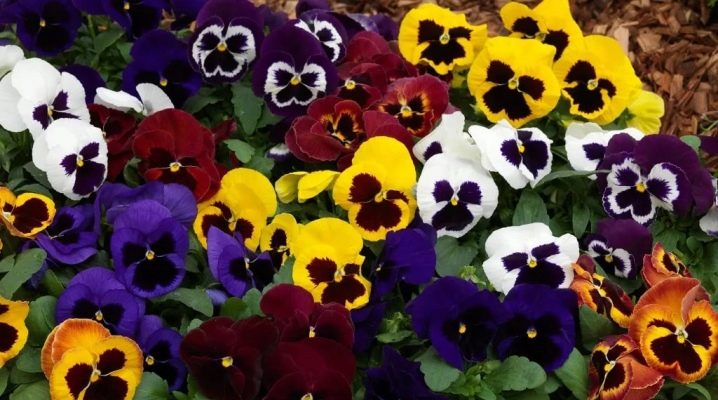
Among the huge number of decorative cultures that are deservedly popular, Viola Vittroka occupies a special place, spectacular varieties of which adorn avenues and adjoining territories, gardens and parks. In addition to the aesthetic appearance, the described plant can boast of another tangible advantage - undemanding care, which is of paramount importance for any grower. To achieve the desired result, it is enough to familiarize yourself with the description of this violet and the basic rules that contribute to its successful cultivation and reproduction.

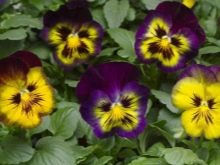
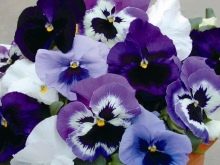
Peculiarities
The highly branched plant in question, also called garden pansies, is a hybrid obtained by crossing the tricolor violet with other types of viola - primarily Altai and yellow. It owes its name to Veit Brecher Wittrock, a Swedish botanist who made a significant contribution to the study of this ornamental species.
The presented violet differs from ordinary pansies in larger and brighter flowers, which give it additional showiness. A list of other features of the Wittrock viola is as follows:
- semi-spreading or compact form;
- the height is from 15 to 40 cm;
- oval or egg-shaped leaves are painted in a deep green color;
- fibrous root system;
- flowers of various colors, the diameter of which is 5–11 cm (depending on the variety);
- small fruits, representing a 3-chamber box;
- small brownish seeds (2x1 mm) that remain viable for 2-3 years.
In most cases, the violet in question is grown as an annual or biennial, but subject to annual division, it can delight its owners much longer.
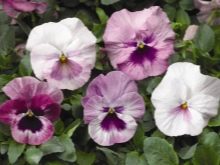
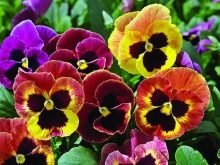
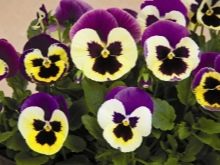
Varieties
The main criterion on the basis of which varieties and hybrids of garden pansies are classified is the diameter of the flowers, defining a plant's attitude to one of the following 5 categories:
- supergiant (10-11 cm);
- giant (9-10 cm);
- large (8-9 cm);
- medium (6–8 cm);
- small (5-6 cm).
Important! The features of the appearance and endurance of violets, as well as the duration and intensity of their flowering, are taken into account.
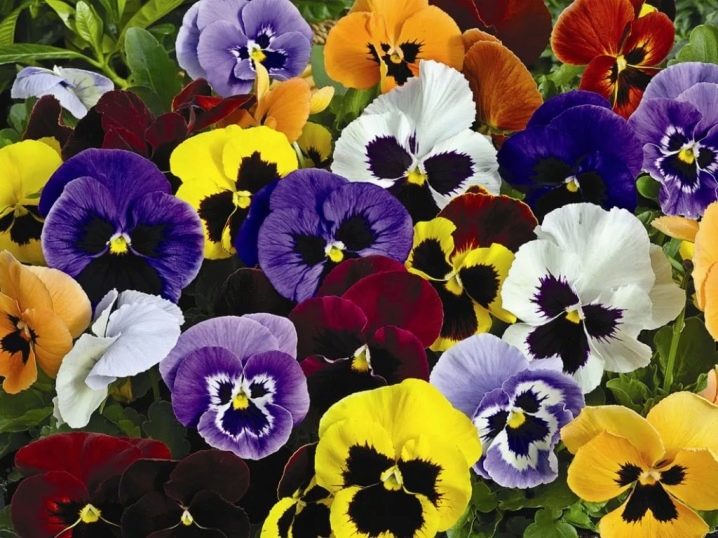
Wittrock's viola varieties deserve separate consideration. The most notable ones are listed below.
- "Terry lace". The height of an adult plant is 20–25 cm. The main distinguishing feature is beautiful corrugated petals. The flowers are varied in color and grow up to 6 cm in diameter.

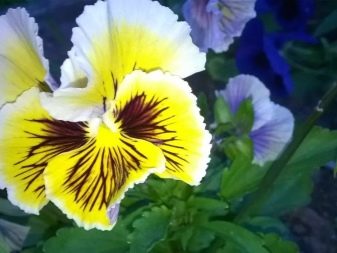
- Alpensee... Representatives of the variety develop up to 30 cm in height. The flowers are blue-black in color and are medium in size (6–6.5 cm in diameter).
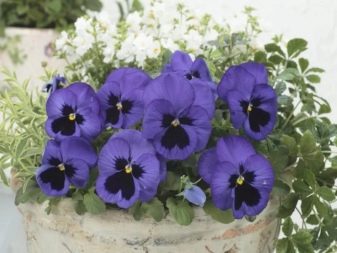
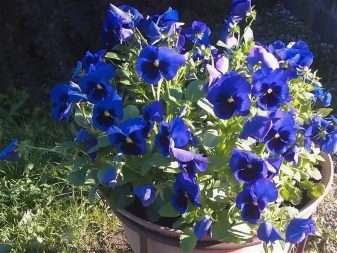
- "Grill". Spectacular early-flowering violet with corrugated petals that can decorate any flower bed. A relatively compact plant, the height of which rarely exceeds 15–20 cm. The flowers are characterized by a bright color, and their size is 6–8 cm.
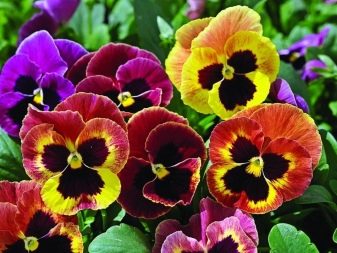

- Magnum Blue Blotch F1... A very interesting variety that grows up to 25 cm in height. The main decoration is large (8 cm) blue flowers with dark eyes.

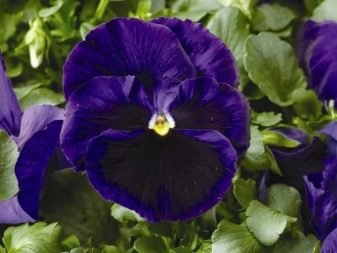
- "Rococo". Another variety that can be called medium-sized. The flowers reach 6 cm in diameter and boast beautiful, corrugated petals of various colors.
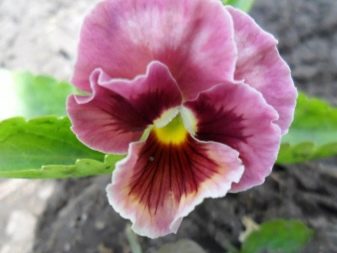
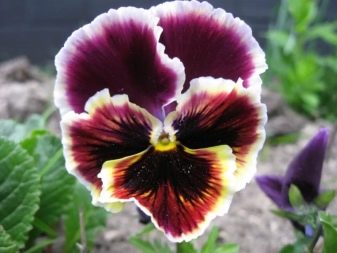
- "Africa". A very popular variety that grows up to 30 cm in height. The flowers are characterized by small size (about 6 cm) and showy yellow-brown petals.
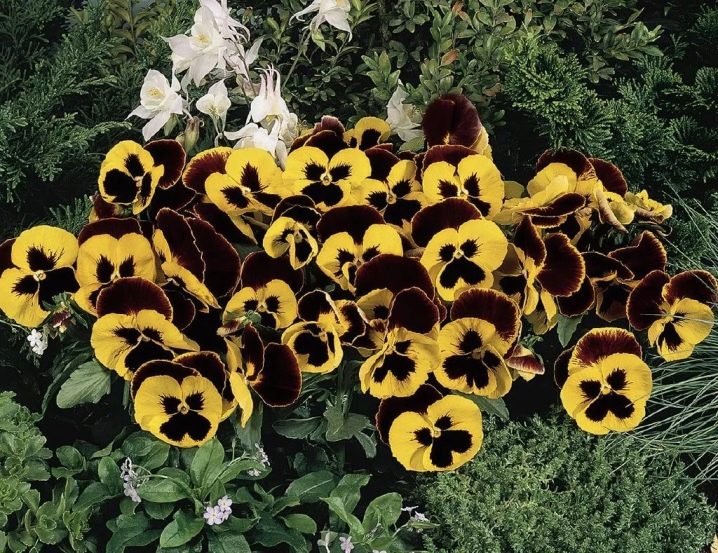
- Colossus. The main advantage of this viola is very large flowers of various colors, the diameter of which reaches 9–10 cm. Another remarkable feature is its compactness (the height of an adult plant is 10–15 cm).
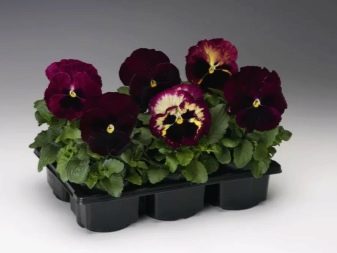
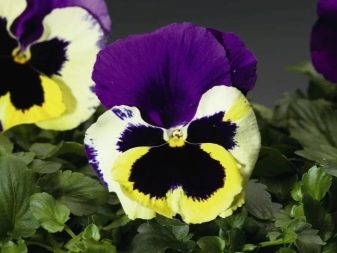
- "Evening Dawn". Representatives of the variety in question grow up to 25-30 cm, which is slightly above average. Their flowers are characterized by spectacular red-black petals and reach 6 cm in diameter.
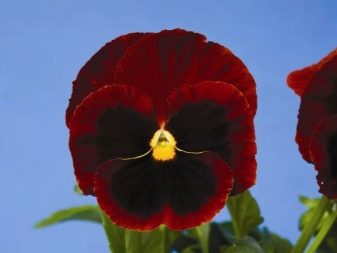
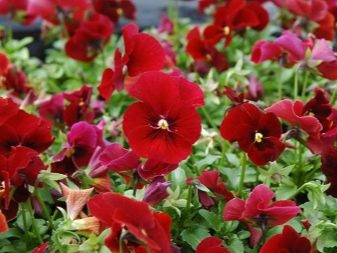
- Flamenco F1... This variety is compact and beautiful flowers, the diameter of which is 5-7 cm. As for the colors, they are very diverse (white-pink, red, purple and others).
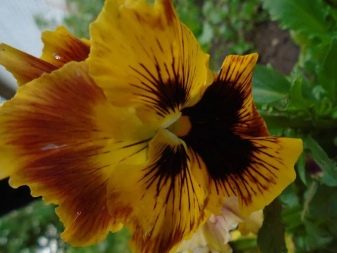
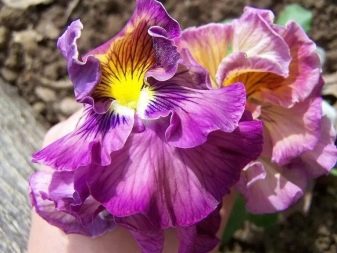
- "Baroque". One of the most popular Vittrock violets, growing up to 30 cm in height and attracting attention with its original flowers. Their petals are colored in burgundy brown, complemented by a border of various shades.
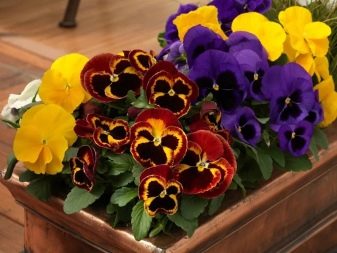
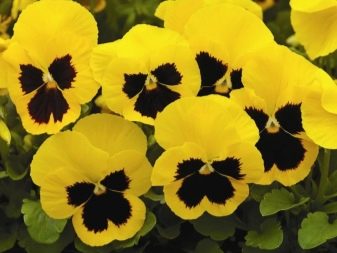
- Honorable Mention And Delta F1 - a variety that occupies a leading position among large-flowered viols. It is characterized by compactness (15–20 cm in height), blooms one and a half decades earlier than most other Vittrock violets and can delight the owner with a spectacular mixture of enchanting colors.
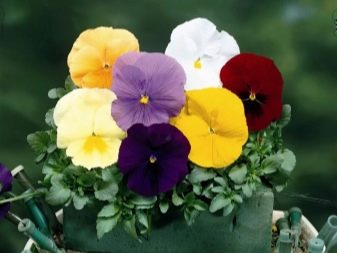
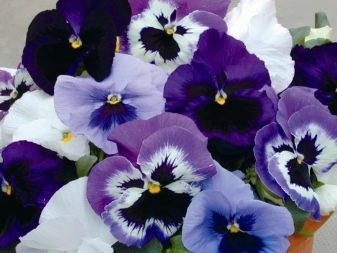
Sowing seedlings
When you need to achieve the fastest flowering of garden pansies (by mid-summer), you should start sowing seeds in the second half of winter. If you postpone this procedure to June or July, you will be able to enjoy the beauty of the opened buds only next year (the culture will develop like a typical biennial). To get started, seeds need dip in a container with a growth stimulant solution (for about a day).
In parallel, the florist should prepare containers (plastic and wooden boxes, wide pots) and fill them with soil of a suitable composition. As the latter, you can use ready-made mixtures for violets, peat seedling substrate or universal soil.
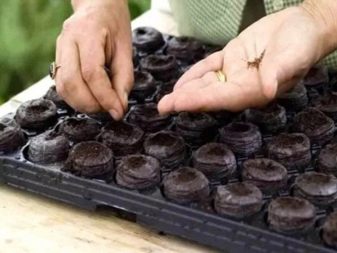
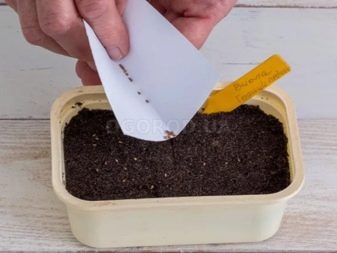
The sequence of further actions is as follows:
- mark the furrows;
- sow prepared seeds (recommended depth - 5 mm);
- water the planting material with settled water at room temperature and cover it with soil;
- cover containers with plastic wrap or glass;
- place containers in a room with a temperature of + 15– + 20 ° C.
For the next 1.5–2 weeks, the planted seeds are provided with daily ventilation (2 times for 10 minutes). After the specified time, the first shoots appear, after which the shelter is removed, and the containers are transferred to a cool and well-lit place. Caring for young plants during this period involves regularly watering them with water at room temperature and feeding with complex fertilizers, carried out 1 time in 2 weeks (the recommended concentration is 50% of that indicated in the instructions).
As soon as the seedlings acquire a pair of true leaves, which happens 30–45 days after germination, the seedlings can be dived into separate compact containers.
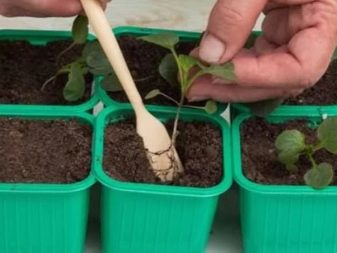
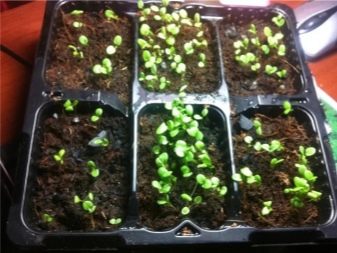
Transplant to open ground
If the seeds were sown in February, planting in open ground is carried out in May, when the insidious spring frosts no longer threaten the plant (the specific time depends on the climatic characteristics of the region). If the Viola Vittrok is grown as a biennial, it is transferred to a permanent place in August or September.
A place that is optimal for planting garden pansies should be well lit. As for the cultivation of the violet in question in partial shade, it is quite acceptable and is characterized by less intense, but longer flowering. Particular attention should be paid to the soil, which must meet three basic conditions, such as:
- fertility;
- looseness;
- neutral reaction (permissible pH values from 6.0 to 8.0).
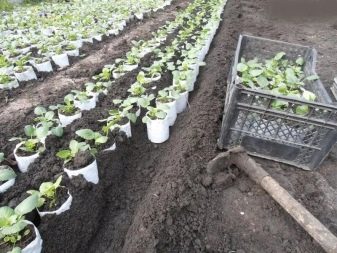

About a week before the planned planting, the soil must be dug up, adding mature compost or humus to it (you should refuse to use fresh manure). Planting young viols is easy, as the following algorithm makes sure:
- arrange the planting material in the holes at a distance of 15–30 cm from each other (determined by the specifics of the variety);
- sprinkle the roots of plants with a substrate;
- carefully compact the soil around the violets;
- water the plants thoroughly.
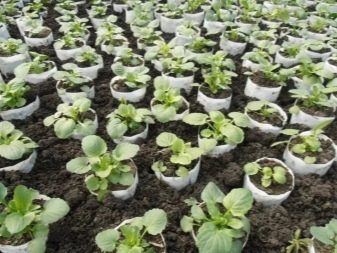

The final stage is mulching the soil with humus or peat, reducing the rate of evaporation of moisture and contributing to the successful establishment of garden pansies.
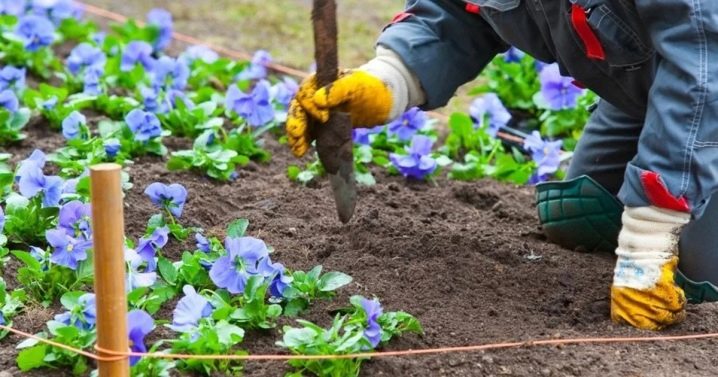
How to care?
Growing Vittrock violets in the open field involves taking into account the rules, the list of which looks like this:
- watering plants should be moderate and regular; if the soil suffers from a moisture deficit, you should not wait for a spectacular viola bloom;
- fertilize it is necessary monthly throughout the growing season, it is advisable to use ammonium nitrate or superphosphate as top dressing, spending 25-30 g per 1 m² of substrate;
- loosening the soil around the plants should be carried out with utmost care so as not to damage the root system of violets located close to the surface;
- weeds need to be disposed of in a timely manner, since they interfere with the full development of the described plant; when starting this procedure, it should be borne in mind that it is performed exclusively by hand.
Important! As for wintering viols, they need a light shelter from spruce branches or fallen leaves.
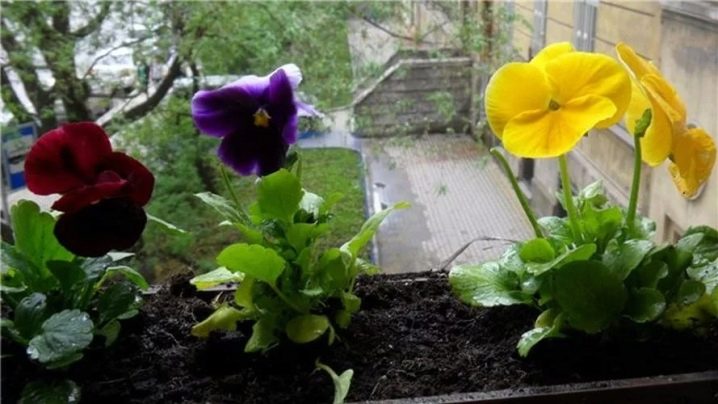
Diseases and pests
One of the main enemies of Wittrock's viola is excessive moisture, which provokes the development of dangerous fungal diseases - root and stem rot, powdery mildew and rust. Effective counteraction to these misfortunes involves the removal of the affected areas, followed by spraying the plants with a fungicide (both sick and healthy, located in the vicinity).
If the ailment is too neglected, the affected violets are removed, and the soil around them is dug up and sprinkled with fine calcined sand, crushed coal or perlite. Of the parasites, garden pansies are most often disturbed by the caterpillars of the violet mother-of-pearl and the clover moth (being typical phytophages, they feed on the leaves of the plant).
To get rid of them, you should use a broad-spectrum insecticide, strictly following the instructions for the purchased drug.
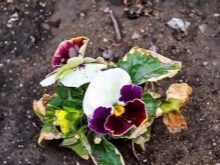
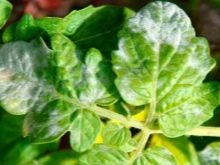
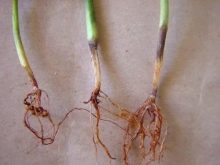
Reproduction
There are several ways to breed.
- The first way reproduction of the described plant involves the use of seeds, which are collected in August or September. After removing from the boxes, they are dried and subjected to stratification (being in conditions of high humidity at a temperature of + 1– + 5 ° C).
- Second option provides for the division of the bush. The optimal time for this procedure is spring (before the beginning of the growing season). This solution is preferable for old violets that are dug up and neatly divided into several parts.
- The third method reproduction of garden pansies is cuttings, primarily relevant for rare forms of the plant in question. It involves the use of apical shoots with 2-3 nodes, separated from late spring to mid-summer. Viola cuttings can be rooted both in special containers for seedlings and in the open field.

Watch a video on the topic.





































































































Last year I bought and sowed seeds in June, and in July my viola has already bloomed.
The comment was sent successfully.